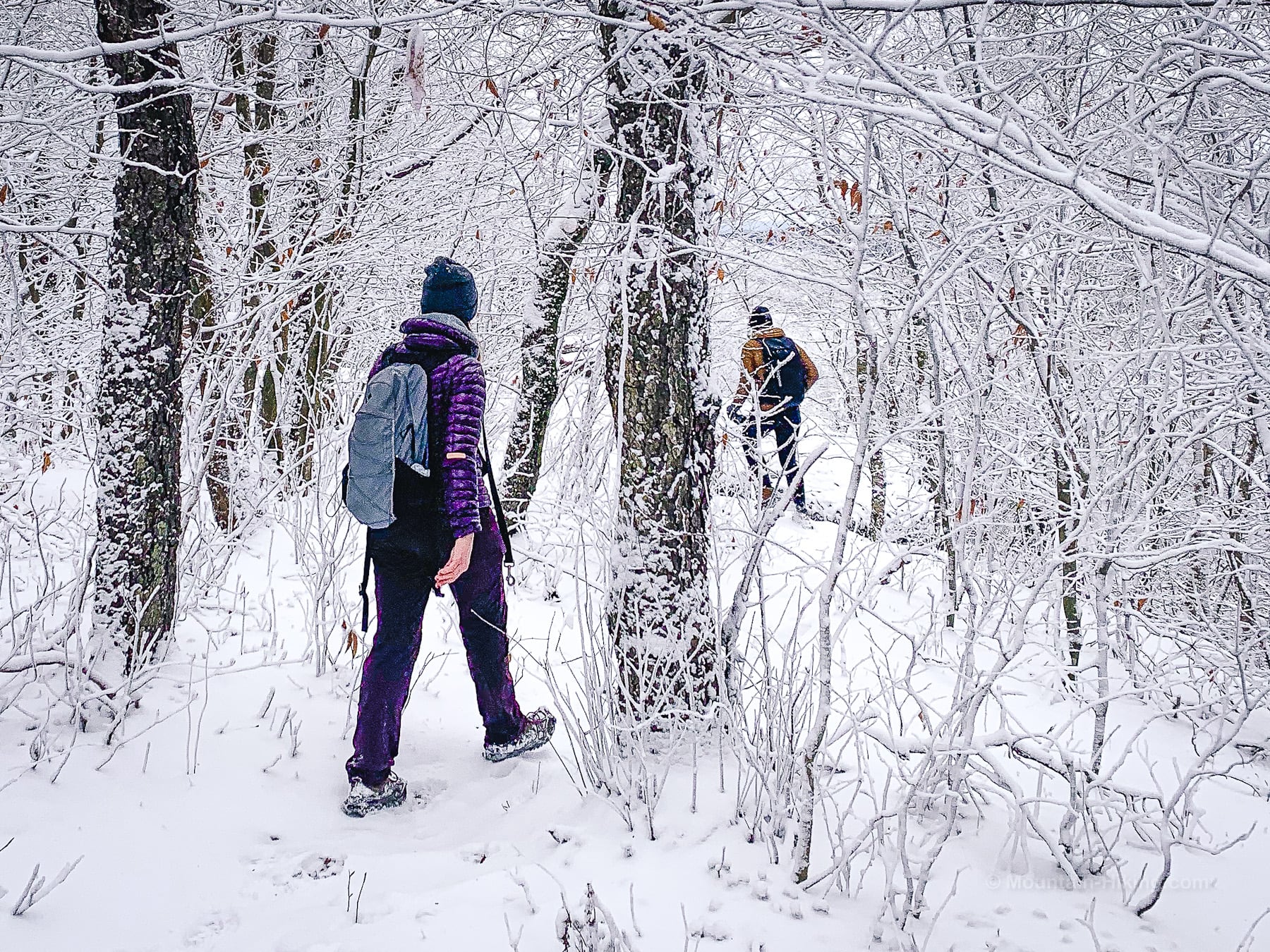Disclosure: This content may contain affiliate links. Read my disclosure policy.
These 35 tips for winter hikes will help keep you safe in the harshest conditions
Before heading out, please also review Winter Hiking Essentials, Survive & Thrive in the Cold and Winter Gear Checklist.
Research
- Check weather for preceding days, for the day of your hike but also for the night of the hike (in case of delay or injury)
- Note current sunrise and sunset times
- Research your route thoroughly
- Review route length and elevation gain/loss (gaiagps.com)
- Allow 25%-50% extra hike time
- Set a turnaround time and stick to it
- Let someone know your intended route and expected return time, and make sure they have the correct emergency number to call
Layering
- Multiple thin layers allow you to modulate your temperature
- Synthetic or smartwool base layers move moisture away from your skin
- A thicker mid layer can be a synthetic tee shirt or fleece jacket — but you might dispense with this after you’ve warmed up
- A technical puffy outer layer traps heat and blocks wind
- A thin rain layer keeps you dry
This New York DEC video on layering is pretty great.
Traction
- Microspikes are a must on every hike from November to June
- Snowshoes are a must for any hike through snow deeper than 8”
- Trekking poles (with snow baskets) are a huge help in icy conditions and on snow hikes
- Breaking trail is exhausting work. Your pace may slow to 1 mile per hour. Rotate members of your group every few minutes.
Extremities
- A wool hat keeps you warm even if it gets wet
- A buff (neck gaiter) is a super versatile tool for dealing with wind
- Gloves for sure, with a second pair in your backpack for backup
- Below 15°F, consider mittens
- If your feet get cold, consider sock liners for extra dryness and warmth, and/or research warmer hiking boots
- Winter gaiters are an absolute must
Hypothermia
- Watch for these symptoms of hypothermia and deal with them immediately, or turn around
- Shivering that won’t stop even though you’re moving
- Mumbled speach
- Any mental confusion at all
- Loss of dexterity
- Red skin (which signals the start of frostbite) that progresses to pale skin (signaling the start of true frostbite)
If you suspect you, or someone you’re with, might be heading into hypothermia territory…
- Immediately turn around
- Switch out of any wet layers into fresh, dry layers
- Eat/drink hot foods/fluids
- Consider updating your off-mountain contact to let that person know what’s happening
Food & Water
- Pack more calories and water
- Keep your reservoir’s feeder tube blown clear to stop it from freezing
- Tuck the mouthpart inside your jacket if it starts to freeze up
- Some people prefer to pack bottles of water and wrap them in thick socks
Quick Tips
- Below freezing, keep your phone next to your body to keep it warm
- Same goes for your headlamps and spare batteries
- Hiking on Sundays means that trails are more likely to be broken out
- Reese’s Pieces don’t freeze hard
Follow Up
Follow my instagram account @TotalCatskills to add fun, informative hiking content to your feed.
Get full access…
Get instant access to the full version of this site and enjoy great supporter benefits: full galleries, full trail notes, early access to the latest content, and more.
Hot on the website right now…
Follow for more…
Follow my @TotalCatskills content on Instagram for regular hiking inspo and safe, inclusive community.

